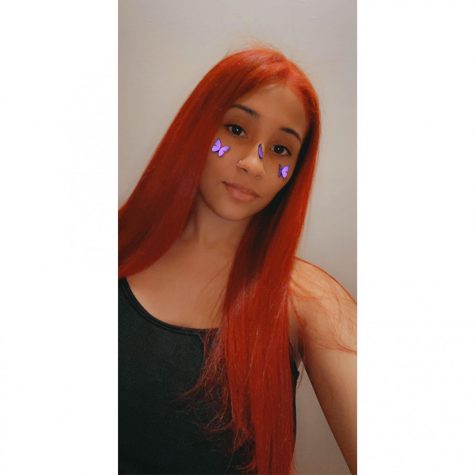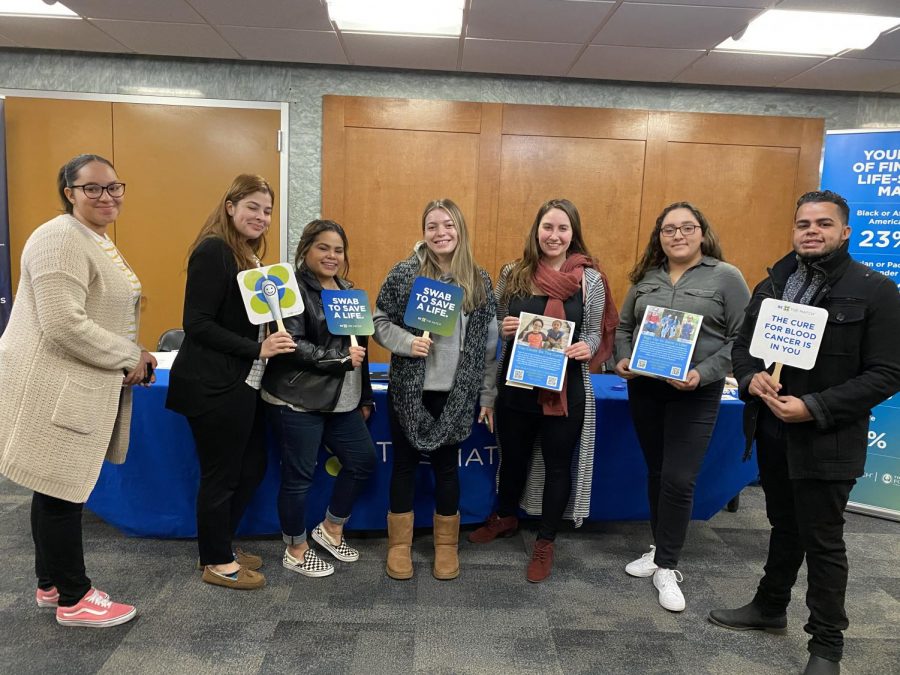Saving A Life: Humanitarian Society Promotes Bone Marrow Donation
The Humanitarian Society teamed up with Be a Match to promote Bone Marrow and blood donation during the first week of February.
For over 30 years, Be The Match, operated by the National Marrow Donor Program (NMDP), has managed the largest and most diverse marrow registry in the world. They work to save lives through transplant.
Lauren Hero, a Senior Community Engagement Representative, hosted the event alongside junior Alyssa Pagano, the President of the Humanitarian Society.
Bone marrow is the spongy tissue inside certain human bones, such as the hip and thigh.
It contains stem cells, which can develop into the red blood cells that carry oxygen through one’s body, the white blood cells that fight infections, and the platelets that help with blood clotting.
Hero spoke on why donating bone marrow is important, and the purpose of the event held in Lecture Hall that Monday and Wednesday afternoon.
“The Humanitarian Society was once again successful in hosting a registration event on campus.” Hero stated.
On Monday, they swabbed 26 students who now have the potential to match a patient in need. On Wednesday. they swabbed 31 students.
“Although these numbers are amazing, we sill need to continue to add donors to the National Registry,” Hero said.
One can register using the link, join.bethematch.org/MercyDF. “Registering and ordering a swab kit is the first step you can take to literally giving someone a second chance at life,” Hero added.
“There are many diseases and disorders that can be cured and/or treated by a bone marrow transplant. The most common and well known diseases are Leukemia, Lymphoma, and Sickle Cell Anemia,” Hero stated.
Hero says that out of roughly 20 million donors on the registry, only between 6,200 and 6,500 people end up being a match and donate, which leaves about 7,000 patients still waiting to find a match, and that everyday there are between 1,000-2,000 new donors being added.
“Only 1 out of every 430 new donors will receive a call,” Hero said.
“If you receive a call that you’re match, you know you could possibly be the only match out of millions of donors,” Hero added.
Hero spoke on the process on becoming a donor. Registration takes up to about five minutes.
The process includes a swab the cheek, which can be done in person at an event or one can ask to receive their swab in the mail.
For those who were not able to attend the events, a swab can be requested and sent in the mail.
Once one is registered, it takes Be The Match about 6 weeks to test the tissue type. One can receive a call about being a match within a couple of months or it could take years to match.
Once someone is a match, they are given a free blood test and physical to confirm if they are healthy enough and the best match, according to Hero.
Once confirmed, they are asked to donate either Peripherial Blood Stem Cells (PBSC) or Bone Marrow. Peripheral blood stem cells are the small number of stem cells that make their way from the bone marrow to the circulating blood.
PBSC is requested 80 percent of the time, while Bone Marrow is requested about 20 percent of the time. It depends on the age, disease, and health of the patient as well as the health and age of the donor.
A video explaining the donation process is seen besides this article.
Pagano says that her and Hero have been working together for a three years and are already planning for the next “Be a Match” event.
“We chose to collaborate with them because of the cause they are trying to bring awareness to, the organization itself is amazing,” Pagano stated.
The company provides materials such as flyers, posters, stickers, pamphlets, and anything needed in order to explain their cause. “Be the Match is great, and the Humanitarian Society is always looking to bring awareness to causes that need it.”
Hero mentioned two children who are currently looking for donors. Isiah is a 8-year-old who was diagnosed with Pseudoexfoliation syndrome, also known as PEX syndrome, which is an aging-related systemic disease. He has been looking for a donor for seven years.
Veronica, age 9, was diagnosed with Osteogenesis imperfecta (OI), also known as brittle bone disease, which is a group of genetic disorders that mainly affect the bones. She has been searching for a donor for three years.
Both kids have had about 20 million donors but have yet to find a match. Hero believes that its due to lack of diversity.
The chances of finding a match is 23 percent for black or African-Americans, 41 percent for Asian or Pacific Islanders, 46 percent for Hispanic or Latino, 57 percent for American Indian and Alaska Native and 77 percent for White.
Patients are most likely to match someone who shares their ethic background.
Sara McNair, a student at Mercy College, shared her experience with looking for a match to now signing up to be a match.
Hero spoke on her personal experience with registering to be a match.
McNair was diagnosed with Leukemia when she was 6-years-old. “I don’t remember much, but I remember feeling weak and sleepy all of the time.”
“Having something like this happen to you can change your life forever, I love the idea of giving back to help someone who needs it,” McNair added.
Both Pagano and Hero spoke on their experience with signing up to be a match.
Pagano recently signed up to be a match at the event that took place at Mercy. “The chances of me being a match are very slim.”
Hero joined the registry in December of 2014 but has not matched with anyone yet.
“I would love to match someone soon, I have hopes that I can help someone who is in need. After all, if I needed a bone marrow transplant I would hope that someone would do it for me.”

Amber Perez is half Puerto Rican and half Italian. She is currently residing at The Bronx, New York and enjoys listening to music and reading books about...








